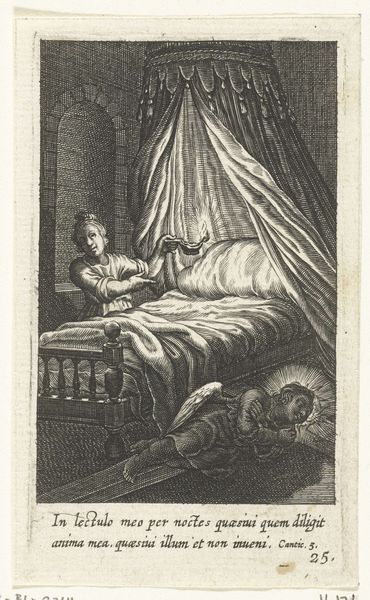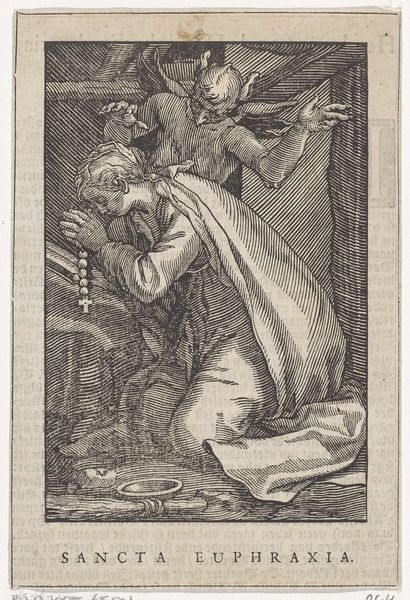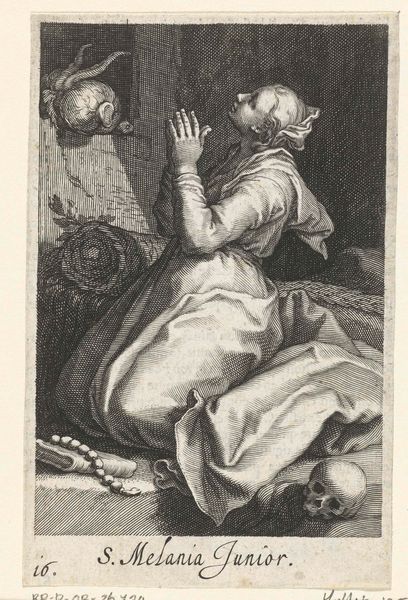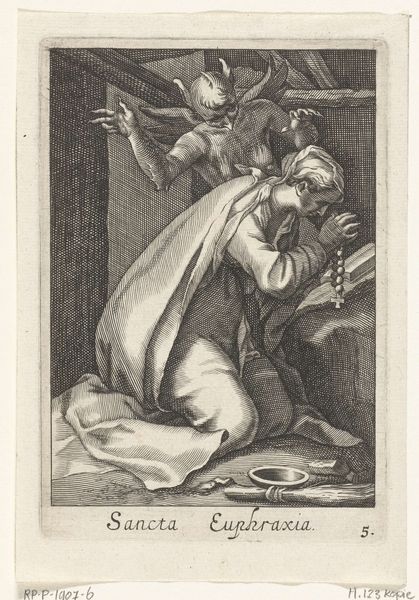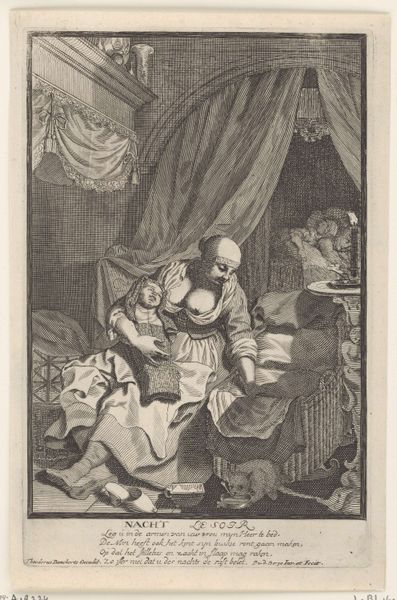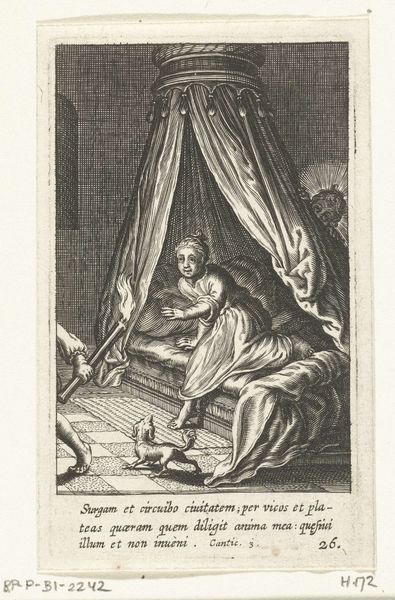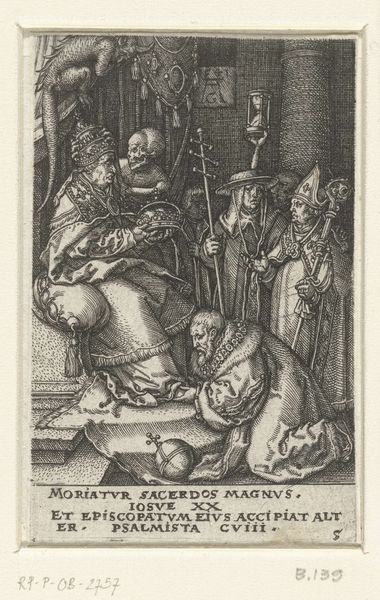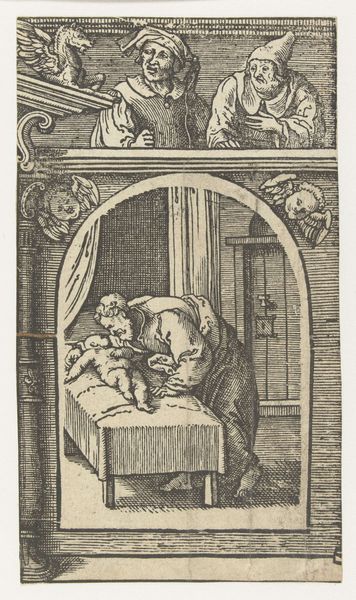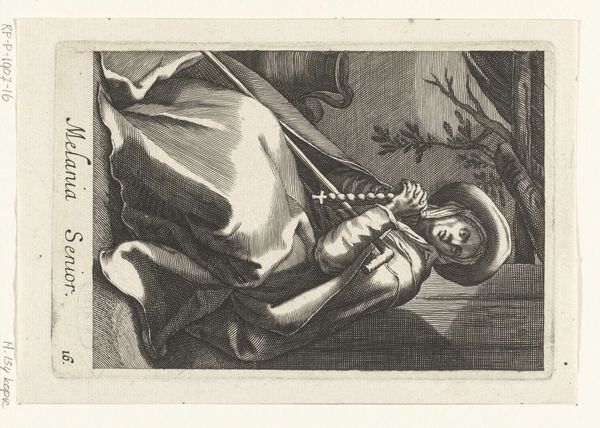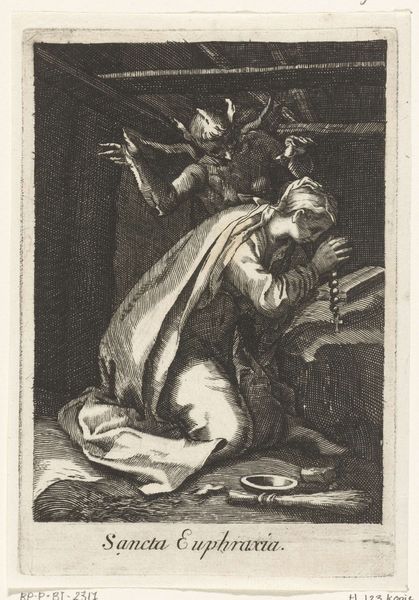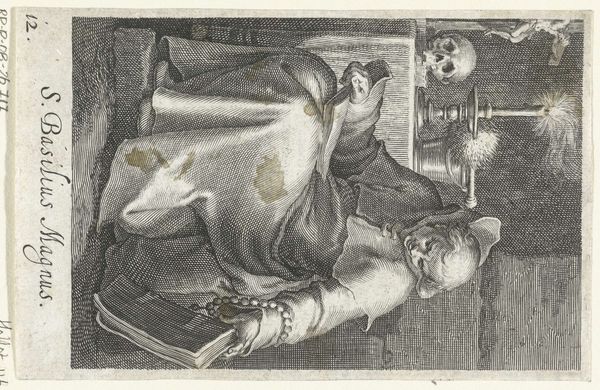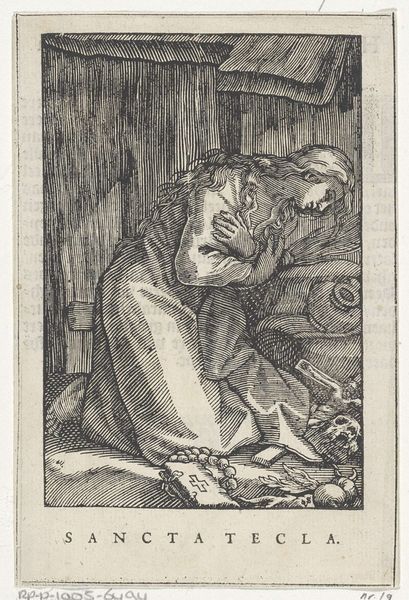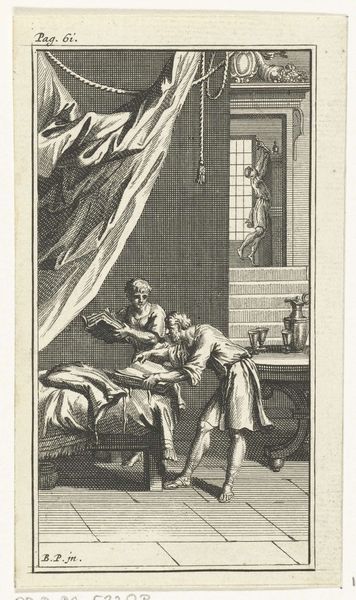
print, engraving
#
portrait
#
baroque
# print
#
history-painting
#
engraving
Dimensions: height 152 mm, width 105 mm
Copyright: Rijks Museum: Open Domain
Curator: Sobering. My initial response is that this feels almost monastic in its austerity. What are your first thoughts? Editor: Immediately, I'm struck by the starkness of it. All those cross-hatched lines creating depth, and that skull just lying there… It’s like a little memento mori whispering in the corner. Very dramatic! Curator: Absolutely. This engraving by Christoffel van Sichem II, dated 1644, depicts Saint Melania the Younger as a hermit. Knowing Melania’s history as a Roman noblewoman who renounced her wealth to pursue a life of asceticism offers important context to this image. Editor: Renounced her wealth, huh? Now, that’s a statement! Looking at the image again, that austere setting suddenly feels less imposed and more chosen. She really went all in. Curator: Indeed. The print highlights her piety through specific visual cues, especially through the act of solitary prayer but also the inclusion of symbols like the crucifix and the skull as vanitas. These objects are, in their own way, visual critiques of the opulence Melania abandoned. Editor: It really grounds the saint in this kind of somber, reflective space. And thinking about the role of women and religion in 17th-century Dutch culture, I see how an image like this presents a particular kind of female empowerment – choosing spiritual devotion over worldly comforts, defining her own path outside of societal norms… Curator: Precisely. The historical backdrop cannot be overstated here; this piece invites an interrogation of class, gender and religious devotion. The portrayal of Melania directly challenges notions of prescribed feminine roles during this era. Editor: Okay, I'm totally with you. So, it's not just a pretty religious picture; it's a commentary, a challenge, a way of thinking about women’s choices then and maybe even now. That makes it feel surprisingly relevant. Curator: Exactly. We often box such depictions into their period, but what they tell us about agency and defiance has echoes through time. Editor: What began as a skull and some lines transforms into this potent image about choices and carving your own way. Who knew asceticism could be so radical? Curator: I suppose that's the power of art – revealing unexpected connections, reframing what we think we already understand. Editor: Agreed. Another layer peeled back! Thanks, Melania, and thanks, Christoffel van Sichem II!
Comments
No comments
Be the first to comment and join the conversation on the ultimate creative platform.

